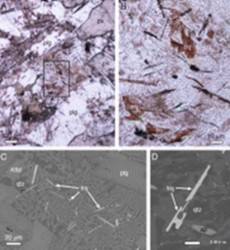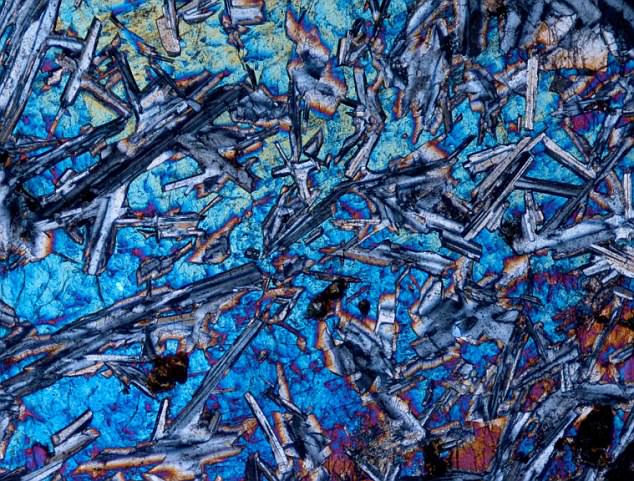[/caption]
When it comes to our natural human curiosity, we want to know if there’s something new out there… something we haven’t discovered yet. That’s why when lunar rock samples were returned, geologists were thrilled to find very specific minerals – armalcolite, pyroxferroite and tranquillityite – which belonged only to our Moon. However, over the years the first two were found here on Earth and tranquillityite was disclosed in specific meteorites. Named for Tranquility Base, site of the first Moon landing, tranquillityite was supposed to be the final hold-out… the last lunar unique mineral… until now.
Birger Rasmussen, paleontologist with Curtin University in Perth, and colleagues report in their Geology paper that they’ve uncovered tranquillityite in several remote locations in Western Australia. While the samples are incredibly small, about the width of a human hair and merely microns in length, their composition is undeniable. What’s more, tranquillityite may be a lot more common here on Earth than previously thought.
Rasmussen told the Sydney Morning Herald, “This was essentially the last mineral which was sort of uniquely lunar that had been found in the 70s from these samples returned from the Apollo mission.The mineral has since been found exclusively in returned lunar samples and lunar meteorites, with no terrestrial counterpart. We have now identified tranquillityite in six sites from Western Australia.”
Why has this remote mineral stayed hidden for so long? One major reason is its delicate structure. Composed of iron, silicon, oxygen, zirconium, titanium and a tiny bit of yttrium, a rare earth element, tranquillityite erodes at a rapid pace when exposed to natural environmental conditions. Another explanation is that tranquillityite can only form through a unique set of circumstance – through uranium decay. Rasmussen explains it’s evidence these minerals were ‘always’ located here on Earth and we share the same chemical processes as our satellite.
“This means that basically we have the same chemical phenomena on the Moon and on Earth.” says Rasmussen. And one of the reasons it has taken so long to be found is, “No one was looking hard enough.”

While it has no real economic value, terrestrial tranquillityite is another good reason mankind should try to preserve pristine regions such as the northeast Pilbara Region and the Eel Creek formation. Who knows what else we might find?
Original Story Source: PhysOrg.com.

